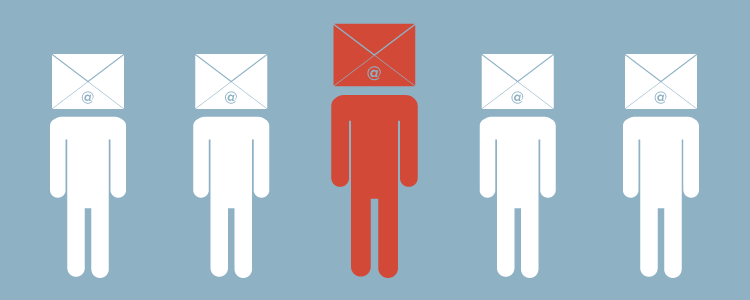In the last couple of years, the concept of ‘content fatigue’ has taken on an important meaning for marketers – all marketers: from the most seasoned, to the juniors. According to MarketingProfs, there are more than 2 million blog posts published on a daily basis. What does this mean for us? It means that buyers are bombarded with more stuff than they could ever read. And this has a direct impact on revenue growth.
Why so?
The reason behind this trend is that many marketers are churning out thoughtless, robotic and unoriginal content. The downfall lies in that the content isn’t tailored to individual buyers. In other words, it isn’t personalized.
Marketers are missing the mark on creating content that really resonates with customers. They aren’t producing relevant and unique messages, and in today’s information age, relevancy and personalization is everything. Beyond blogs, the key channel of 1:1 engagement with buyers is email. And when it comes to email personalization, emails deliver six times higher transaction rates, but 70% of brands fail to use them.
From prospects to marketing-qualified leads and finally to sales, the customer journey is riddled with buyers that need different messages at different stages of the sales cycle, but they’re simply not receiving them. This is why a human touch is necessary. And when it comes to adding that human touch, marketing automation sets the stage for this capability.
In the grand scheme of things, marketing automation works to rid marketers of the tedious, repetitive tasks of manual efforts – those tasks that incorporate batch-and-blast email campaigns and tired and generic social media messages. Also, when it comes to the mobile, a large number of marketers aren’t optimizing their emails for smartphone users. Marketing automation enables marketers to create a tailored customer journey for buyers through all of their preferred channels of communication. Multichannel personalization ensures that individual buyers are passing through the sales funnel while feeling like they are communicating with a human on the receiving end.
So what to personalize?
Let’s look at the several ways that content could be personalized when it comes to communication with prospects and customers.
- Customer preferences
Your current database that’s populated with contacts and leads should work to enable you to know how these prospects and customers want to consume your content. How do you find out? Ask your email recipients: how often would you like to receive a message from us? Which channel of engagement would you prefer?
- Customer profile
The more we demonstrate to our audiences that we know about their needs and wants, the more they feel like a priority. Include their name, industry and position as much as you can – especially in emails.
- Social media customers
Get to know your followers on a personal level and communicate with them, accordingly. Make sure to speak with buyers directly. Answer questions that social media users have on an individual level on Facebook, Twitter, Instagram and any other preferred channel of communication.
Studies show that customers go through the buying journey nearly 60% without ever reaching out to a sales rep. In order that they make the journey to this stage, we need to do everything we can to enable them to do so, and personalization is the ultimate way of achieving this.
How effective is your content? Are your messages tailored to individual buyers? If you’re missing the mark on personalization, you may be leaving money on the table.

